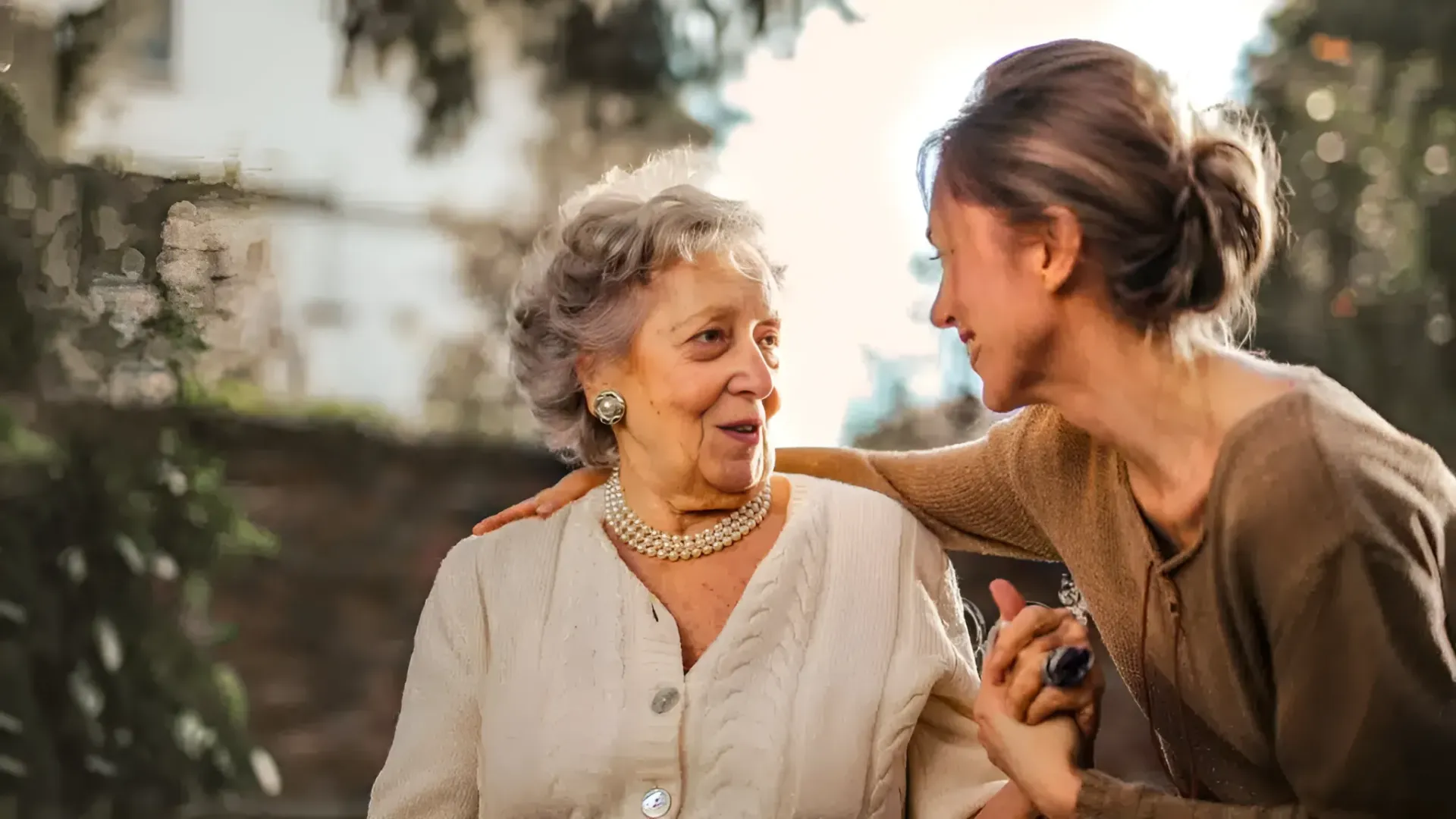Senior Apartments vs Assisted Living in Colorado Springs

There are various options to consider when it comes to finding the perfect living arrangement for seniors in Colorado Springs. Two popular choices are senior apartments and assisted living facilities. Both provide comfortable and enriching environments for older adults but differ in independence, care levels, amenities, and costs. In this article, we will explore the differences between senior apartments and assisted living to help individuals and families decide on their loved ones’ retirement lifestyle.
Senior apartments offer independent living for seniors who desire a community environment with convenient amenities and social opportunities. On the other hand, assisted living facilities provide more comprehensive care and support for seniors who require assistance with daily activities. Understanding the distinctions between these housing options allows you to make a well-informed choice that best suits your unique needs and preferences.
Whether you’re considering senior living communities, retirement homes, active adult communities, or 55+ communities, we’ll provide the information you need to explore the diverse senior housing options available in Colorado Springs. Let’s delve into the details of senior apartments and assisted living so you can confidently choose the right retirement solution that promotes independence, well-being, and an active lifestyle for yourself or your loved ones.
Understanding Senior Living Options
To make an informed decision about senior living options, it’s essential to understand the differences between senior apartments and assisted living. Senior apartments, also known as independent living communities, cater to older adults who can live independently but desire a community environment with convenient amenities and social opportunities. On the other hand, assisted living facilities provide more care and support for seniors who require assistance with daily activities such as bathing, dressing, and medication management.
Defining Senior Apartments and Assisted Living
Senior apartments are designed for seniors who want to maintain independence and privacy in a community setting. These apartments offer a range of amenities, such as fitness centers, communal spaces for socializing, libraries, and organized activities. Residents can live independently while enjoying the benefits of community living.
On the other hand, assisted living facilities are suitable for seniors who need assistance with activities of daily living (ADLs). This includes personal care services like bathing, dressing, grooming, and medication management. Assisted living facilities provide higher care and support, ensuring seniors have the assistance they need to live comfortably.
Evaluating Independence and Care Levels
Independence is a crucial factor to consider when choosing between senior apartments and assisted living. In senior apartments, residents can live on their terms and remain independent. They can come and go as they please, engage in social activities, and enjoy the amenities offered by the community. Assisted living provides higher care and support, including assistance with ADLs, medication management, and 24/7 staff availability. While residents still have independence, it is essential to note that their care needs are met.
Assessing the Right Time for Transition
Deciding when to make the transition from independent living to assisted living can be a challenging task. Assessing the individual’s care needs, health condition, and overall well-being is essential. If a senior is struggling to manage daily activities and their safety or quality of life is at risk, it may be time to consider assisted living. Family members and healthcare professionals can provide valuable input in determining the right time for transition, ensuring that the senior’s needs are met and their well-being is prioritized.
Understanding the differences between senior apartments and assisted living is crucial in making the right choice for yourself or your loved one. By considering factors such as independence, care levels, and the right time for transition, individuals and families can make an informed decision that aligns with their unique needs and preferences.
Exploring the Amenities of Senior Apartments
Senior apartments offer a variety of amenities designed to enhance the retirement lifestyle of residents. These amenities are carefully curated to provide a welcoming and enriching environment promoting independent living and community.
Communal Spaces: Senior apartments often feature spacious communal areas where residents can socialize, participate in group activities, or simply relax with fellow neighbors. These spaces foster a sense of belonging and allow friendships to flourish.
Fitness Centers: Staying active is crucial for maintaining physical and mental well-being. That’s why many senior apartments are equipped with fitness centers, exercise equipment, and wellness programs tailored to the needs and abilities of older adults. Residents can engage in gentle workouts, yoga, or aqua aerobics to stay active and healthy.
Libraries: Senior apartments often have libraries or reading rooms for those who enjoy reading or quiet reflection. These spaces offer a peaceful sanctuary where residents can lose themselves in a good book or explore new topics of interest.
On-Site Dining Options: Seniors in senior apartments often have the convenience of on-site dining options, such as cafés or restaurants. These establishments provide delicious and nutritious meals, eliminating the need for extensive meal planning and preparation while allowing residents to socialize and enjoy a variety of culinary experiences.
Transportation Services: Many senior apartments offer transportation services for residents. Whether it’s a scheduled shuttle service for group outings, transportation to medical appointments, or a way to explore nearby attractions, these services provide convenience and peace of mind for residents who may no longer drive.
Organized Activities and Events: Senior apartments often organize various activities and events to foster an active and engaging community. These may include social gatherings, educational workshops, arts and crafts classes, movie nights, and even day trips to nearby attractions. Residents can pursue their passions, learn new skills, and connect with like-minded individuals.
Senior apartments aim to create a vibrant environment where seniors can lead fulfilling lives while enjoying a range of amenities and services. These amenities cater to older adults’ unique needs and interests, promoting independent living, social engagement, and overall well-being.
Services Provided in Assisted Living Facilities
Assisted living facilities in Colorado Springs offer comprehensive services to support seniors with their daily needs. These facilities go beyond providing a comfortable living environment and care for seniors’ well-being, ensuring their safety, health, and engagement in social activities.
| ASPECT | INDEPENDENT LIVING | ASSISTED LIVING |
|---|---|---|
| Level of care provided | Focuses on social needs and independence; limited medical and supportive care services. | Provides assistance with activities of daily living (ADLs) and access to medical and supportive care services. |
| Cost structure | Requires an entrance fee and monthly fee for maintenance and amenities. | Rental-based with monthly fees covering services and personal care assistance. |
| Community design | Large campuses with multiple buildings spread out, offering more space and distance between residences. | Smaller footprint with most resident needs provided within the building, including memory care programs for individuals with cognitive impairments. |
| Family involvement | Primarily resident-driven decisions with encouragement for family involvement in the community. | Active family involvement, especially for residents with dementia, including participation in care planning processes. |
| Amenities and programming | Flexibility in dining options and programming. | All-inclusive meals and tailored programming, particularly in memory care programs. |
Personal Care and Medical Assistance
One primary service in assisted living facilities is personal care assistance. The dedicated and highly trained staff offer support with activities such as bathing, grooming, and medication management. They are committed to ensuring seniors receive the necessary assistance to maintain their hygiene and well-being.
In addition to personal care, assisted living facilities have on-site medical staff to monitor residents’ health. This ensures that seniors receive timely medical attention and care. The presence of medical professionals gives residents and their families peace of mind, knowing that health needs can be addressed promptly within the facility.
Emergency Response and 24/7 Monitoring
Assisted living facilities prioritize the safety and security of their residents. They have systems in place for emergency response and 24/7 monitoring. Whether it’s a medical emergency or any other urgent situation, trained staff are ready to provide immediate assistance and ensure residents’ well-being.
The 24/7 monitoring includes surveillance cameras and systems that track the well-being of residents. This constant vigilance helps detect any potential issues early on and enables the staff to take proactive measures to ensure the safety and security of all residents.
Engagement in Social and Recreational Activities
Assisted living facilities understand the importance of social interaction and engaging activities for seniors’ emotional well-being. They offer a variety of social and recreational activities to promote engagement and a sense of community among residents.
From organized social events, including game nights and movie screenings, to fitness classes and outings, there are plenty of opportunities for seniors to connect with others and enjoy meaningful social interactions. These activities provide entertainment and contribute to seniors’ overall well-being and a sense of purpose.
Assisted living facilities in Colorado Springs work diligently to provide a well-rounded experience for their residents, ensuring that their physical, medical, and social needs are met. By offering personal care assistance, 24/7 monitoring, and engaging in social activities, these facilities create a supportive and enriching environment for seniors to thrive in retirement.
Senior Apartments: Independent Living for Seniors
Senior apartments provide the ideal opportunity for seniors to enjoy independent living while being part of a supportive community. These apartments offer a range of amenities and services to enhance the retirement lifestyle of residents. Located in beautiful Colorado Springs, senior apartments in this area provide a picturesque backdrop for seniors to thrive in a vibrant and engaging environment.
Living in a senior apartment allows individuals to maintain their independence and privacy. Each resident has a private space, typically a spacious apartment with all the necessary amenities. The apartments are designed to meet the specific needs of seniors, with features such as grab bars, wide doorways, and accessible bathrooms.
One of the key advantages of senior apartments is the sense of community. Residents have access to communal areas where they can socialize with their peers and participate in various activities and events. These community spaces often include lounges, libraries, fitness centers, and outdoor areas for relaxation. Regularly organized social activities allow seniors to make new friends and engage in hobbies and interests.
In addition to the community aspect, senior apartments offer various services and amenities to support an active lifestyle. Many apartments have on-site dining options where residents can enjoy nutritious meals without cooking or grocery shopping. Transportation services are often provided, making it easy for seniors to get around and explore the surrounding area.
Living in a senior apartment in Colorado Springs also offers the benefit of being near various outdoor activities and attractions. With its stunning natural beauty and numerous parks, seniors can enjoy scenic walks, picnics, and recreational activities.
Senior apartments provide a safe and secure environment where seniors can age gracefully while enjoying independence. The supportive community, convenient amenities, and beautiful surroundings make senior apartments appealing for individuals seeking a fulfilling and enriching retirement lifestyle.
Comparing Costs: Senior Apartments vs Assisted Living
Affordable Senior Housing Options
One factor to consider when considering housing options for seniors is affordability. Senior apartments often offer more affordable housing options compared to assisted living facilities. These apartments provide independent living in a community setting, allowing seniors to maintain independence while accessing convenient amenities. The cost of senior apartments can vary based on factors such as location, size of the apartment, and included services. However, senior apartments generally have lower monthly costs than assisted living facilities.
Understanding the Assisted Living Pricing Structure
Assisted living facilities typically have a different pricing structure compared to senior apartments. In addition to a base monthly fee, which covers rent and access to shared amenities, assisted living facilities also charge additional fees based on the required care and services. These additional fees can vary depending on the specific needs of each resident, such as assistance with daily activities, medication management, and specialized care for conditions like Alzheimer’s or dementia. It’s essential for individuals and families to carefully review the pricing structure of assisted living facilities to ensure they understand what is included and what additional costs may be incurred.
Financial Planning for Long-term Care
Planning for long-term care and senior living options involves careful financial planning. This includes considering the costs associated with senior apartments or assisted living. Seniors and their families should assess their current financial situation and determine how much they can comfortably allocate toward housing and care. It’s also important to plan for potential future needs and unexpected expenses. Consulting with a financial advisor or elder care specialist can be beneficial in creating a comprehensive financial plan that considers the costs of senior living, including any necessary healthcare services.
Assisted Living for Seniors: A Closer Look at Care Levels
Assisted living facilities offer a range of care levels tailored to meet seniors’ individual needs. These facilities provide support with activities of daily living (ADLs) to ensure residents’ well-being and quality of life.
Activities of Daily Living (ADL) Support
Assisted living facilities are equipped to assist seniors with various activities of daily living. These may include personal hygiene tasks like bathing, dressing, grooming, and assistance with eating and mobility. The dedicated staff members in assisted living facilities are trained to provide compassionate care and support, promoting independence and dignity for residents.
Customized Care Plans in Assisted Living
Care plans in assisted living facilities are specifically designed to cater to each resident’s unique needs. Upon arrival, an assessment is conducted to determine the level of care the individual requires. Based on this assessment, a customized care plan outlines the specific services and support needed to optimize the resident’s well-being. These personalized care plans ensure that seniors receive the appropriate level of assistance while maintaining their independence to the fullest extent possible.
The Role of Memory Care Units
Within assisted living facilities, memory care units are available to provide specialized care for seniors living with Alzheimer’s disease or other forms of dementia. These units offer a safe and secure environment tailored to meet the unique needs of individuals with memory impairments. The dedicated staff members in memory care units undergo additional training to provide specialized care and support, creating a supportive and engaging atmosphere for residents with memory loss.
Senior-Friendly Apartments and Community Engagement
Senior-friendly apartments are often located within age-restricted communities specifically designed to cater to the needs of older adults. These communities offer a wide range of social opportunities and amenities tailored to meet seniors’ unique interests and preferences.
Age-Restricted Communities and Social Opportunities
Age-restricted communities provide a supportive and engaging environment for seniors to live and thrive. These communities foster a strong sense of belonging and encourage social interaction among residents. Through organized activities, events, and clubs, seniors can connect with like-minded individuals, forge new friendships, and participate in various social and recreational activities.
From fitness classes to book clubs, these communities offer abundant opportunities for seniors to pursue their hobbies, interests, and passions. Age-restricted communities promote a fulfilling and enriching retirement lifestyle by fostering a strong sense of community and belonging.
Facilities and Accessibility Features
Senior-friendly apartments within age-restricted communities are designed to focus on comfort, convenience, and accessibility. These apartments often feature various facilities and amenities to enhance seniors’ overall quality of life.
Facilities such as fitness centers, swimming pools, walking trails, and golf courses promote physical activity and wellness among residents. Communal spaces such as community rooms, libraries, and lounges provide socializing, relaxation, and intellectual stimulation opportunities.
Accessibility features such as elevators, ramps, and grab bars ensure that the living environment is safe and easily navigable for residents with mobility challenges. By prioritizing accessibility, senior-friendly apartments promote independence and empower seniors to live active and fulfilling lives.
Impact of Community Design on Senior Wellness
The design of age-restricted communities plays a crucial role in promoting senior wellness. These communities are often designed with walkability in mind, featuring well-maintained sidewalks, pedestrian-friendly pathways, and proximity to essential services, such as grocery stores, medical facilities, and recreational amenities.
By creating a walkable and interconnected community, seniors have easy access to daily necessities, fostering independence and reducing reliance on personal vehicles. This design approach promotes physical activity, which is beneficial for maintaining health and well-being as seniors age.
Furthermore, age-restricted communities often incorporate green spaces, parks, and landscaped gardens, providing opportunities for outdoor recreation, relaxation, and connection with nature. These natural elements enhance the overall well-being and quality of life for seniors.
Senior-friendly apartments within age-restricted communities offer many social opportunities, convenient facilities, and thoughtful designs that promote community engagement, active living, and senior wellness.
Lifestyle and Flexibility: Active Adult Communities vs Assisted Living
Active adult communities and assisted living offer different lifestyles and levels of flexibility for seniors.
In active adult communities, seniors can enjoy an independent and active lifestyle while benefiting from a low-maintenance living environment. These communities are designed for individuals who desire a sense of community, access to amenities, and opportunities for social activities. Residents can engage in fitness classes, social clubs, and organized events. The flexibility of active adult communities allows seniors to maintain their independence while enjoying a supportive and engaging environment.
On the other hand, assisted living provides a more structured living environment with additional care and support services. It is suitable for seniors who require assistance with daily activities such as bathing, dressing, and medication management. Assisted living facilities offer personalized care plans and round-the-clock support to ensure the well-being of residents. While assisted living may provide less flexibility regarding lifestyle choices, it offers a higher level of care for those with medical and mobility needs.
When choosing between active adult communities and assisted living, individuals should consider their preferences, current health needs, and desired level of independence. Active adult communities are ideal for independent seniors who value flexibility and a vibrant social life. On the other hand, assisted living provides a higher level of care and support for seniors who require assistance with daily activities. Ultimately, the decision should be based on what best suits the individual’s lifestyle, preferences, and overall well-being.
Housing Styles and Options: From 55+ Communities to Retirement Homes
When it comes to housing options for seniors, a wide range of styles and options are available, catering to different preferences and needs. From vibrant 55+ communities to cozy retirement homes, seniors can choose the living environment that best suits their lifestyle.
Apartment-Style Living vs. Residential Housing
One popular option for seniors is apartment-style living in 55+ communities. These communities offer independent living arrangements where residents can enjoy their private space while benefiting from the convenience of community amenities, such as fitness centers, social activities, and organized events. Apartment-style living provides a sense of independence and a vibrant social environment where seniors can connect with like-minded individuals.
On the other hand, residential housing in retirement homes offers a more traditional home environment. This type of housing is well-suited for seniors who prefer a quieter and more private lifestyle. Retirement homes often provide comfortable accommodations and support services such as meal preparation, housekeeping, and maintenance. These homes offer a warm and inviting atmosphere where seniors can feel at home while receiving assistance.
Transition Planning from Independent to Assisted Living
Transition planning is essential for seniors as they age and their care needs may change. While independent living provides autonomy and freedom, there may come a time when additional support is required. Planning for this transition allows seniors and their families to explore different options, such as assisted living, which offers more comprehensive care and assistance with daily activities.
By considering the potential need for assisted living in the future, seniors can make informed decisions about their housing choices. This proactive approach ensures a smoother transition and allows seniors to maintain their quality of life as their care needs evolve.
The Role of Continuing Care Retirement Communities (CCRCs)
Continuing Care Retirement Communities (CCRCs) provide a comprehensive solution for seniors who want to plan for their long-term care needs. These communities offer a range of housing options, from independent living to assisted living and even skilled nursing care. Seniors can choose the level of care that best suits their current needs, with the peace of mind that additional support will be available if their circumstances change.
CCRCs often feature a continuum of care, allowing residents to age in place and receive the appropriate services as their requirements change. This flexibility makes CCRCs an attractive option for seniors who want to ensure they can remain in a familiar community while receiving the care they need.
Conclusion
Deciding between senior apartments and assisted living is a significant decision that requires careful consideration. It’s crucial to prioritize individual needs, preferences, and care requirements to find the best retirement living option. Senior apartments offer independent living in a community setting, balancing autonomy and social engagement. On the other hand, assisted living facilities provide more comprehensive care and support for seniors who require assistance with daily activities.
Personalizing senior living based on individual needs is key to ensuring a comfortable and enriching retirement lifestyle. By understanding the unique needs of each senior, families can make informed choices about the level of independence, support, and community engagement required. Whether in senior apartments or assisted living, Colorado Springs offers a variety of options for older adults seeking a fulfilling retirement.
In conclusion, senior apartments and assisted living present distinct advantages and considerations. By evaluating the level of care needed, lifestyle preferences, and financial factors, individuals and their families can make a well-informed decision regarding the best senior living option.
FAQ
What is the difference between a retirement home, senior housing, and assisted living facilities?
Retirement homes typically provide accommodation for older seniors who are mostly independent but may require some assistance with daily activities. Senior housing is a broad term encompassing various types of housing options designed for elderly individuals, including retirement homes, independent living communities, and assisted living facilities. Assisted living facilities, on the other hand, offer a higher level of care than retirement homes, providing assistance with activities of daily living (ADLs) such as bathing, dressing, and medication management.Factors influencing costs include the size and layout of living spaces, the level of care needed, and the inclusion of services such as medication management, housekeeping, and transportation. Facilities offering specialized care for conditions like Alzheimer’s or dementia may have higher fees due to increased staffing and resources required for memory care.
It’s important to research and visit multiple assisted living facilities in the Colorado Springs area to compare costs, amenities, and services offered. Many facilities offer pricing packages tailored to individual needs, so it’s wise to inquire about additional fees associated with specific services or levels of care.
Some assisted living facilities may accept long-term care insurance, veterans’ benefits, or Medicaid waivers to help offset costs for eligible residents. Exploring all available financing options, including social security benefits and home care assistance, can help make assisted living more affordable for seniors and their families.
When considering costs, it’s essential to also consider the quality of care, facility amenities, staff-to-resident ratio, safety measures, and overall atmosphere. Investing in a reputable and well-equipped assisted living facility can provide peace of mind and ensure a comfortable and supportive environment for seniors in need of assistance with daily activities. Additionally, staying informed about regulations and laws governing assisted living facilities in Colorado, as well as monitoring inflation rates and healthcare costs, can help families plan for future expenses and make informed decisions about senior care options in the Pikes Peak area.
Does medicare or medicaid cover assisted living or independent living?
Medicare generally does not cover the costs of assisted living or independent living communities. However, in some cases, Medicaid may provide coverage for assisted living services, depending on the state’s regulations and the individual’s eligibility.
Factors influencing the cost of independent living include the size and location of the living space, the range of amenities and services offered, and any additional fees for utilities, meals, housekeeping, and transportation. Some independent living communities may also offer optional services such as personal care assistance, medication management, and healthcare coordination for an additional fee.
When considering the cost of independent living in Colorado Springs, it’s important to research and visit multiple communities to compare costs, amenities, and services offered. Many communities offer pricing packages tailored to individual needs, so it’s wise to inquire about any additional fees associated with specific services or amenities.
Some seniors may be eligible for financial assistance through social security benefits, long-term care insurance, veterans’ benefits, or Medicaid waivers to help offset the cost of independent living. Exploring all available financing options can help make independent living more affordable for seniors and their families.
Ultimately, the cost of independent living in Colorado Springs is influenced by factors such as location, amenities, services, and individual preferences. Investing in a reputable and well-equipped independent living community can provide seniors with a comfortable and supportive environment where they can enjoy an active and fulfilling lifestyle in the scenic Pikes Peak area.
Are assisted living costs paid by medicaid or medicare?
Medicaid may cover some of the costs associated with assisted living for eligible individuals, but Medicare typically does not cover these expenses. However, long-term care insurance or personal funds are often used to pay for assisted living services.Memory care services in Colorado Springs assisted living facilities typically include:
- Safe and Secure Environment: Memory care units are often equipped with secure entrances and exits to prevent wandering and ensure the safety of residents. The layout of the facility is designed to reduce confusion and provide a familiar environment for residents.
- Specialized Programming: Memory care programs offer activities and therapies tailored to the unique needs and abilities of residents with memory impairment. These may include cognitive stimulation exercises, reminiscence therapy, sensory stimulation, and music or art therapy.
- Personalized Care Plans: Each resident receives a personalized care plan based on their individual needs, preferences, and level of cognitive function. Care plans may include assistance with activities of daily living, medication management, and behavioral support.
- Trained Staff: Memory care staff receive specialized training in dementia care, including techniques for managing challenging behaviors, communication strategies, and techniques for promoting independence and dignity.
- Family Support: Memory care facilities often provide support and resources for families and caregivers, including education, support groups, and respite care services.
When considering memory care services in Colorado Springs, it’s important to research and visit multiple assisted living facilities to find the right fit for your loved one’s needs. Look for facilities that are licensed and regulated by the state, with trained staff who have experience in memory care. Inquire about the facility’s approach to memory care, the qualifications of the staff, and the availability of specialized programs and therapies.
Memory care services may be covered by long-term care insurance, veterans’ benefits, or Medicaid waivers for eligible individuals. Exploring all available financing options can help make memory care more affordable for seniors and their families in the Colorado Springs area.
When is it time for assisted living or memory care for your senior loved one?
It may be time to consider assisted living or memory care for your senior loved one when they require more assistance with daily activities than can be provided at home, or when their safety and well-being are at risk due to memory loss or other cognitive impairments.Assisted living facilities that accept Medicaid or participate in low-income housing programs often offer subsidized rates for eligible individuals who meet specific income and asset criteria. These programs may help cover the cost of basic services such as housing, meals, personal care assistance, and medication management.
When considering assisted living options in Colorado Springs that accept Medicaid or participate in low-income housing programs, it’s important to research and inquire about eligibility requirements, availability of services, and any additional fees or costs associated with specific amenities or levels of care.
Some assisted living facilities may offer specialized programs or services for individuals with memory impairment, such as Alzheimer’s or dementia care, while others may focus on promoting independent living and social engagement for seniors with varying levels of mobility and health needs.
It’s also important to consider factors such as location, facility amenities, staff experience, and regulatory compliance when choosing an assisted living facility in Colorado Springs. Visiting multiple facilities, asking questions, and seeking recommendations from healthcare professionals or social service agencies can help you find the right fit for your needs and budget.
Additionally, exploring all available financing options, including social security benefits, veterans’ benefits, and long-term care insurance, can help make assisted living more affordable for seniors and their families in the Pikes Peak area.
How do services in assisted living and nursing homes compare?
Assisted living facilities primarily offer assistance with ADLs, medication management, and basic healthcare services, while nursing homes provide more extensive medical care and skilled nursing services for individuals with complex medical needs or disabilities.While there is no set limit to the number of residents that assisted living facilities in Colorado Springs can accommodate, most facilities strive to maintain a comfortable and homelike environment while ensuring the safety and well-being of their residents. The size of the facility, the layout of living spaces, and the availability of common areas and amenities all contribute to the overall capacity of the facility.
Some larger assisted living communities in Colorado Springs may accommodate several dozen or even over a hundred residents, while smaller facilities may have a more intimate setting with fewer residents. The number of residents living in an assisted living facility can also fluctuate over time as new residents move in and existing residents transition to other levels of care.
Assisted living facilities in Colorado Springs are regulated by state laws and regulations governing long-term care facilities, including requirements related to staffing ratios, safety standards, and quality of care. These regulations help ensure that assisted living facilities can provide a supportive and nurturing environment for their residents while adhering to the highest standards of care.
When considering assisted living options in Colorado Springs, it’s essential to visit multiple facilities, ask questions, and inquire about the number of residents, staff-to-resident ratios, and availability of services and amenities. Finding the right assisted living facility that meets your needs and preferences, whether it’s a larger community with a vibrant social atmosphere or a smaller, more intimate setting, can help you feel at home and thrive in your senior living experience in the beautiful Pikes Peak area.
How do I decide between senior apartments and assisted living?
When deciding between senior apartments and assisted living, consider the level of assistance your aging parent requires. Senior apartments offer independent living with minimal support services, while assisted living provides a higher level of care, including assistance with daily activities and healthcare management.
Medicaid-Funded Facilities: Medicaid may cover the cost of assisted living for eligible seniors who meet specific income and asset criteria. Medicaid waivers and home and community-based services (HCBS) programs may provide financial assistance for assisted living services, including personal care, medication management, and activities of daily living.
Nonprofit Organizations: Nonprofit assisted living facilities may offer lower costs compared to for-profit facilities, as they prioritize providing affordable care and services to seniors over maximizing profits. These organizations may rely on donations, grants, and community support to subsidize costs and offer sliding-scale fees based on income.
Affordable Senior Living Communities: Some senior living communities offer affordable housing options for seniors with limited incomes. These communities may offer reduced rents or income-based pricing for independent living, assisted living, or supportive housing services.
What is the right option for my aging parent?
The right option for your aging parent depends on their individual needs, preferences, and level of independence. Assess their physical and cognitive health, as well as their ability to manage daily tasks independently, to determine the most suitable living arrangement.
What services do assisted living communities provide?
Assisted living communities offer a range of services, including assistance with ADLs, medication management, meal preparation, housekeeping, transportation, recreational activities, and access to healthcare professionals.
What is an active adult community?
Active adult communities are designed for older seniors who are relatively independent and seek an active lifestyle. These communities typically offer amenities such as recreational facilities, social activities, and maintenance-free living.










